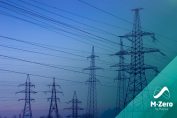
European energy policy has so far been aimed mainly to achieve three goals: getting a competitive and affordable energy price, making system environmentally sustainable and guarantee security of supply.
One of the main steps taken by the EU was in 2011, when the importance of an internal energy market was recognized. Particularly for gas system, the so-called “European Gas Target Model” was developed, fixing a deadline to achieve it by 2014, with particular emphasis on that no member of the EU should remain isolated from the European gas connections after 2015. And all that because according to own studies made by EU, it is estimated that net economic profit after the establishment of internal market is among 16-40 billion euros a year.
The beginning was hopeful. The idea of this model was based on the creation of a single European gas market, so that gas will flow between different zones based on supply and demand behaviour. This market would consist in areas of input and output balance (hubs) interconnected between them.

The expiration of the deadline originally set makes us wonder what the steps taken to attain this goal are and the need to rethink the original model according to the current context.
In that sense, Ukraine crisis last year demonstrated us once more the need to implement in EU a well-integrated and connected energy market with diversified supplies and solidarity to face possible future crises.
If internal gas market should enable alignment of prices and ensure gas supply, limiting dependence on the outside, the focus should henceforth be as follows:
1. Hubs development, with a rise in liquidity of existing ones and the creation of new points of balance. The most important step in this line is the standardization of game rules to guarantee a clear, simple and robust regulatory framework (a “software”). This is why the Framework Guidelines (ACER) and network codes (ENTSOG) were adopted and implemented for practical operation of electricity and gas markets. For this reason, as shown in the chart below, European gas markets are converging to a homogeneous behaviour in recent years.

The idea is that interconnection capacity between hubs is allocated through coordinated auctions. The establishment of PRISMA platform in 2013 was crucial, as it has allowed network interconnection capacity of 28 operators, responsible for transporting 70% of Europe’s gas, to be auctioned in a transparent and uniform manner, while allowing conclusions on the development of new infrastructure. However, the liquidity of certain hubs, such as French PEGSud or Italian PSV is still incipient, which reduces system reliability as a whole.
2. Promotion of interconnections, i.e. infrastructure (“hardware”) to ensure domestic traffic. In this regard, the European Commission proposed in May 2014 to extend the initial target (10% interconnection) to 15% by 2030. To do so, the EU sets criteria to identify priority projects likely to receive European funding (PCIs) based on the viability of the project, cost-benefit or security of supply provided.
Recently we are seeing a divergence between each country’s energy policies, which often meet more to own national interests: the strengthening of connecting projects with Russia, as the Nord Stream 2, or Greek agreement for Turkish Stream.
As a conclusion, Europe must rethink and go ahead with its “Energy Union” model. Gas market won’t be possible if liquidity of existing hubs is not increased and the creation of new hubs and interconnections to ensure the diversification of supply is not bolstered.
Spain still relies on Energy Union
In early July the agreement between Spain, France and Portugal for expanding gas transmission capacity was formalized, which will rise to 7,000 million cubic meters by the end of the year and will provide an equivalent exchange margin of 15% of French consumption and 20% of Spanish. Fostering interconnection between Spain and France is key to diversification of gas supplies in EU, as it will provide flexibility to short-run supply in north-western Europe through the six regasification LNG plants and pipelines with Algeria.
In reference to software development, Spain has an important role in European gas market. This year the start of Iberian Gas Hub, the organized gas market in Spain and Portugal area, is expected. From Magnus CMD, we will keep you informed about this process that we hope will establish a turning point in gas market in our country.
Susana Gómez | Energy Consultant
If you found it interesting, please share it!
Recent Articles


































